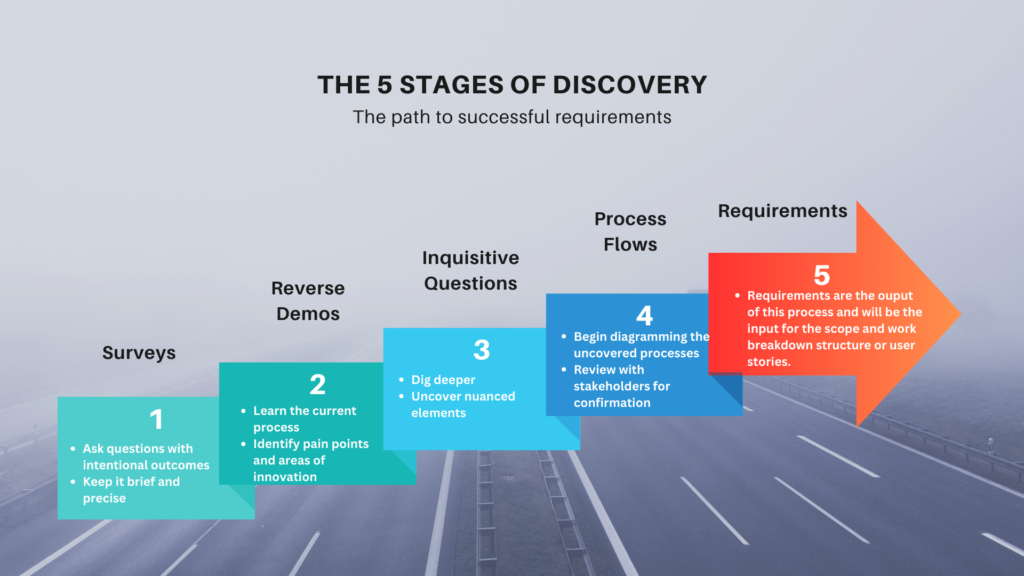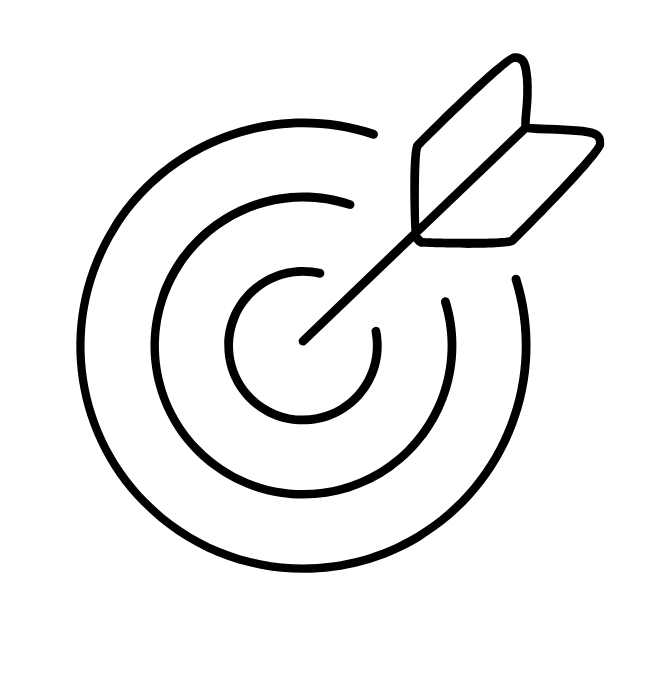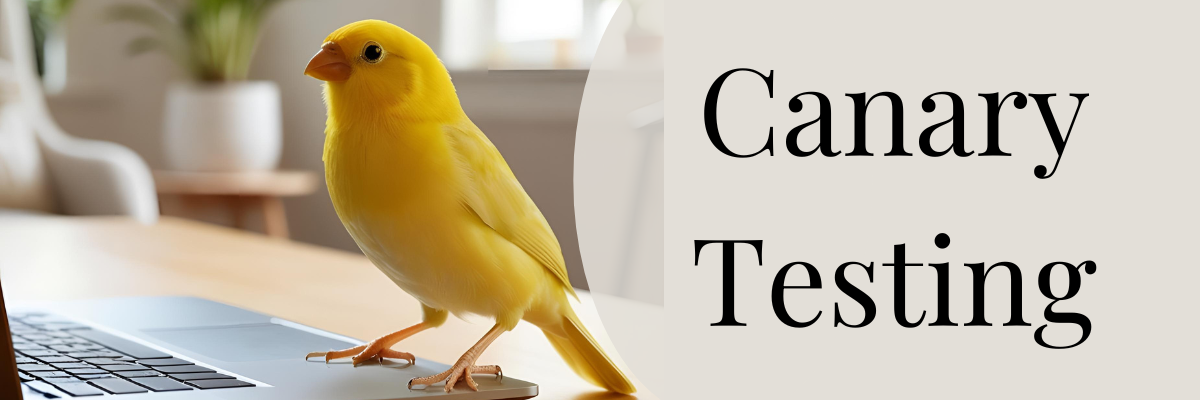Within the sphere of project and product management, the discovery phase stands as the gateway to ultimate success and problem solving. It’s the period where insights are unearthed, Knowledge is shared, and where the foundation for the entire project is laid. Within this phase lies an art – the art of discovery – where learning becomes paramount, and every action is geared towards unraveling the roadmap of the project landscape.
Managing the discovery phase effectively requires a delicate balance of methodologies, communication, and strategy. One must methodically navigate through reverse demos, surveys, and deliberate questioning to extract meaningful insights.
A successful output of this phase will be a detailed list of requirements that will define the scope and deliverables of the project; essentially all the inputs for a work breakdown structure (WBS). In Agile, the output will be a robust backlog ready for grooming and prioritization.

Here are some key aspects to consider:
The Power of Surveys
Surveys serve as powerful tools for gathering quantitative data and gauging stakeholder sentiments. Craft surveys with clear objectives, focusing on key aspects such as user preferences, pain points, and expectations. Ensure surveys are concise, easily accessible, and incentivized if necessary to maximize participation. Analyze the results meticulously to identify trends, patterns, and areas for improvement.
Make Time for Reverse Demos
Reverse demos, where stakeholders showcase their current processes or systems, offer invaluable glimpses into the inner workings of the stakeholder’s current environment. As a project manager, encourage participants to demonstrate workflows, highlight pain points, and articulate their needs. Actively listen, observe, and probe for deeper insights. These sessions often reveal hidden challenges and present opportunities for innovation.
Ask Intentional Questions:

The art of asking intentional questions lies at the heart of effective discovery. Tailor your inquiries to elicit specific information about processes, flows, platforms, and pain points. Foster open dialogue and encourage stakeholders to articulate their needs and challenges candidly. Strive to uncover underlying motivations and objectives, driving the project forward with clarity and purpose.
Consider This
Implement Best Practices:
Adopting best practices enhances the efficacy of the discovery phase. Establish clear objectives and timelines, ensuring alignment with project goals and client expectations. Cultivate a collaborative environment where cross-functional teams collaborate seamlessly. Leverage agile methodologies to iterate and adapt based on emerging insights, fostering continuous improvement.
Manage Client’s Precious Time:
Respect the value of your client’s time by optimizing the discovery process. Prioritize sessions, focusing on high-impact areas and critical stakeholders. Streamline communication channels, providing regular updates and seeking feedback proactively. Demonstrate tangible progress and convey the significance of their involvement in shaping project outcomes.
Organize Outcomes Effectively:
Centralizing and organizing outcomes is essential for maximizing the value generated during the discovery phase. Utilize tools such as project management software, collaborative platforms, or dedicated repositories to document findings, insights, and action items. Categorize information systematically, making it easily accessible for reference and future decision-making.
Process Flows
With the insights gathered from surveys, reverse demos, and additional inquiries, the project team embarks on the crucial task of creating process flows. Process flows serve as visual representations of the intricate procedures and workflows identified during the discovery phase. They provide a structured framework for understanding the current state of operations, highlighting pain points, bottlenecks, and areas for improvement. As the team collaborates to diagram these processes, they not only solidify their collective understanding but also lay the groundwork for future enhancements. These process flows become more than mere diagrams; they evolve into dynamic tools for stakeholder engagement and validation.
Engaging stakeholders in the process flow diagramming phase offers multiple benefits. It provides them with a tangible visualization of their current processes, fostering clarity and transparency. Stakeholders can offer valuable feedback, confirming the accuracy of the current state while also envisioning the future state of operations. This collaborative approach ensures alignment between project objectives and stakeholder expectations, laying a solid foundation for the subsequent phases of the project. Moreover, by actively involving stakeholders in the process flow design, the project team cultivates a sense of ownership and commitment, fostering a conducive environment for successful project implementation.
Crystallization of Project Requirements
As the project team navigates through the process flow diagramming phase, the culmination of insights, feedback, and stakeholder collaboration paves the way for the crystallization of proper project requirements. These requirements serve as the blueprint for the project’s execution, outlining the specific functionalities, features, and deliverables needed to achieve the desired outcomes. By integrating the learnings from surveys, reverse demos, and intentional questioning into these requirements, the team ensures alignment with stakeholder expectations and project goals. Thus, the journey from discovery to process flow diagramming culminates in the articulation of comprehensive project requirements, laying a solid foundation for the project’s success and guiding its trajectory towards excellence.
In conclusion, mastering the art of discovery requires a blend of strategic thinking, effective communication, and a relentless pursuit of knowledge. By embracing reverse demos, surveys, intentional questioning, and best practices, project managers can navigate the complexities of the discovery phase with confidence. Respect the client’s time, organize outcomes diligently, and anticipate transformative outcomes that pave the way for project excellence. In the journey of project and product management, the art of discovery is not merely a phase but a cornerstone of success.





